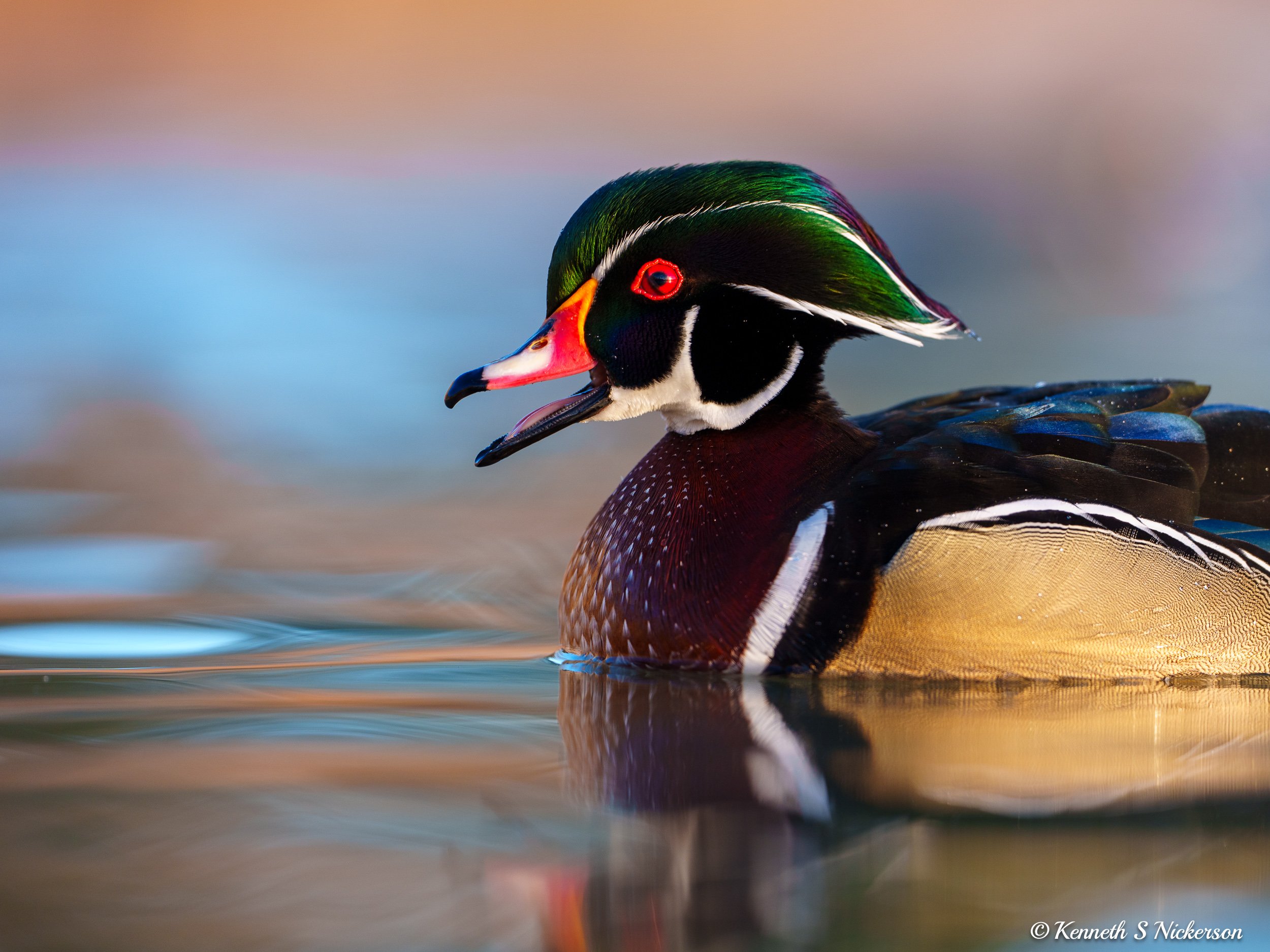NM - Waterfowl
About one third of New Mexico is desert, and the state as a whole is considered semi-arid to arid, so it might seem surprising that it is a great location for waterfowl in the winter. However, the Rio Grande river wetlands including Bosque del Apache NWR offer open water, ample food sources like corn fields, and mild temperatures along the central flyway coming south from Canada. During my trip, I photographed 22 waterfowl species. By comparison, over the past 5 years, I have only photographed 26 waterfowl species here in Massachusetts. This photo is of a male Wood Duck giving a full display of his beautiful plumage.
On my first full day, it had been snowing overnight and in the morning. So much for the mild New Mexico winters. When I arrived to Bosque del Apache, I stopped at a frozen pond to take a look around. This American Coot was walking on the ice. After slowly getting close and lying down on the path at the edge of the pond, I was able to capture this shot. I like how the background is a uniform white except for the snow by the coot’s interesting feet. While I saw a huge variety of waterfowl at Bosque, this was the only example where I was able to get quite close to a bird for a photograph. Visitors are restricted to the roadways and a couple of walking paths. This provides great opportunities to see lots of birds, but it makes it rather difficult to get close to them. All of the other photos in this post were taken at Tingley Beach, a park along the Rio Grande in Albuquerque. There, it was much easier to get close to the birds and to get low to the ground.
This is a male American Wigeon. For this post, I am just going to provide a number of photos I like with the species presented in alphabetical order.
I was first introduced to the male Bufflehead, with its iridescent head, in Chatham. It is common on the ponds and harbors there in the winter, and I can frequently see them from our dock. In general the male birds have significantly more vibrant plumage, so they tend to be the images I have selected.
This is a male Canvasback which was one of the 12 new species for me on this trip.
The Hooded Merganser is a bird that I can sometimes find on the pond in Harvard at this time of the year.
Mallards are rather ubiquitous around the country, so I was happy to get this shot which is a bit different than countless other photos that I have taken of them.
At just over 2’ in length, the Neotropic Cormorant seems very tiny to me. In Chatham, we have the Double Crested Cormorants which are about 4’ in length.
After the Snow Geese, I believe that the Northern Pintail might have been the second most common waterfowl in Bosque del Apache.
The Pied-billed Grebe is a small and somewhat dull looking bird, but for whatever reason I have always found them cute.
I saw only this one Redhead on my trip, so I was glad that I was able to get some good photos. It was also a new species for me.
I have never understood why this bird is called a Ring-necked Duck rather than a Ring-billed Duck. Apparently, there is a faint brown ring around the neck of the male duck during mating season. Personally, I have never noticed it.
Finally, I wanted to end with a second Wood Duck photo simply because this photo makes me smile.












